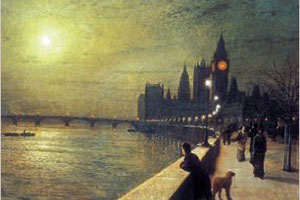
History-Periods
Past eras

From pre-history to today
Choose your period

Periods of History
explore the different eras

The collapse of the Liberal Party during the First World War was a significant event in British political history. Prior to the outbreak of war in 1914, the Liberal Party had been in power for over a decade, having won a landslide victory in the 1906 general election. However, the war brought with it a set of challenges that the Liberal government struggled to overcome, and as a result, the party's support began to decline rapidly.
One of the main challenges that the Liberal Party faced during the war was the issue of conscription. The government initially relied on voluntary recruitment to fill the ranks of the armed forces, but as the war dragged on and casualties mounted, it became clear that more soldiers were needed. This led to the introduction of conscription in 1916, a policy that was deeply unpopular with many Liberal supporters.
In addition to the conscription issue, the Liberal Party was also split over the issue of Ireland. The government's decision to postpone the implementation of Home Rule for Ireland, which had been promised before the war, alienated many Irish nationalists who had previously supported the party.
Furthermore, the war also had a significant impact on the British economy, which suffered from inflation, rising prices, and shortages of food and other essential goods. The government's attempts to deal with these issues through policies such as price controls and rationing were not always successful, and this added to the discontent among the population.
The combination of these factors led to a decline in the popularity of the Liberal Party, and in the 1918 general election, the party suffered a crushing defeat. The Conservative Party, which had been in opposition during the war, won a landslide victory, and the Liberal Party was reduced to a rump of just 36 seats in the House of Commons.
The split within the Liberal Party during the First World War was closely connected to the decline of the party. One of the key figures in this split was David Lloyd George, who had been a leading member of the Liberal government prior to the war and who became increasingly critical of the government's handling of the war effort.
Lloyd George was appointed as Minister of Munitions in 1915 and quickly gained a reputation as an effective and dynamic administrator. However, he clashed with the Prime Minister, Herbert Asquith, over a number of issues, including the need for greater government control of the economy and the question of conscription.
In December 1916, Asquith was forced to resign as Prime Minister, and Lloyd George succeeded him. This marked a major turning point in the history of the Liberal Party, as Lloyd George pursued a more interventionist approach to the war effort than his predecessor. He introduced a range of measures to boost production and increase recruitment, including the introduction of conscription.
However, this approach was deeply unpopular with many Liberal MPs, who saw it as a betrayal of the party's principles of individual liberty and limited government. In 1918, a group of anti-Lloyd George Liberals formed the National Liberal Party, which supported the Prime Minister's interventionist policies. This split the Liberal Party and undermined its support in the 1918 general election.
Overall, the collapse of the Liberal Party during the First World War was a significant event that had long-lasting consequences for British politics. The decline of the party paved the way for the emergence of the Labour Party as a major force in British politics, and it also marked the beginning of a period of Conservative dominance that would last for much of the 20th century.
This section needs to be completed
If you have a suggestion regarding additional topics you would like to see included - please let us know
Reference: Article by Greg Scott (Staff Historian), 2024
Tour Reviews
History Attractions
Submit Tour Suggestions
2024 Departures
Spotlight Tours
Events and anniversaries

All content and images are protected by copyright to Access History